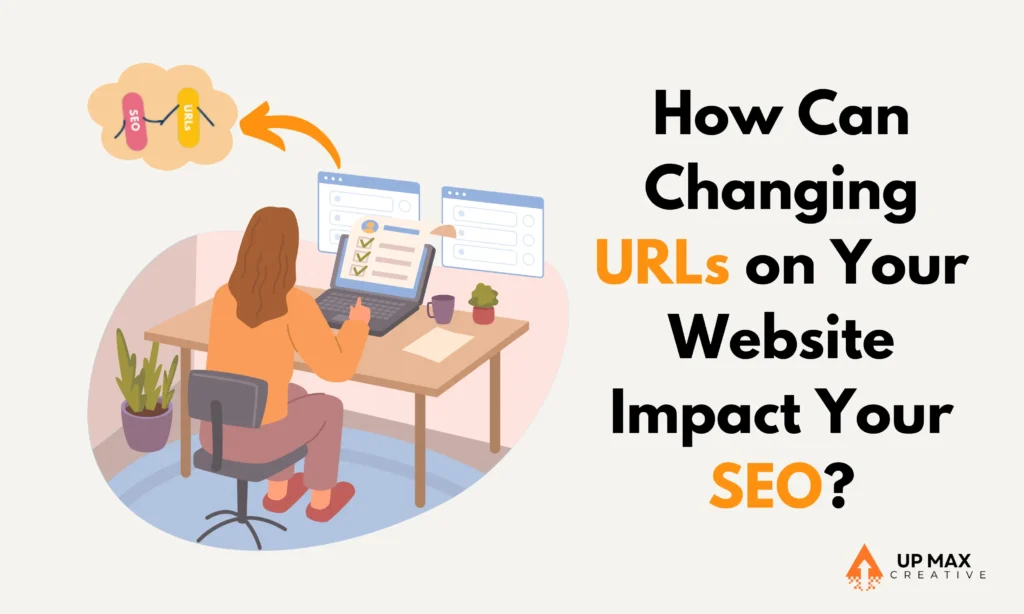
Changing URLs on your website might seem like a simple task, but it can have a significant impact on your SEO and overall website performance. Whether you are restructuring your site, moving to a new domain, or making updates for better user experience, it is crucial to handle URL changes correctly to avoid drops in rankings, lost traffic, and broken links. In this blog, we will explore how changing URLs affects SEO, when it is necessary to make these changes, and the best practices to follow for a seamless transition.
Why Changing URLs Can Affect SEO
Search engines index your website based on URLs, associating them with keywords, backlinks, and authority over time. When you change URLs, you disrupt this connection, which can lead to:
- Loss of Backlinks: Backlinks from other websites to your old URLs may become broken if not properly redirected.
- Indexing Issues: Search engines need to reindex new URLs, leading to temporary ranking drops.
- Broken Internal Links: If internal links are not updated, users may encounter 404 errors.
- Drop in Traffic: A poorly executed URL change can cause significant traffic loss.
- Loss of Keyword Rankings: URLs containing relevant keywords can lose their search visibility if not properly handled.
When Should You Change Your URL Structure?
Although it is best to avoid changing URLs unnecessarily, there are valid reasons to do so:
1. Site Redesign or Restructuring
If your website is being redesigned or reorganized, URLs may need to be updated to improve navigation, user experience, and SEO.
2. Changing Domains
Businesses that undergo rebranding or mergers may need to switch to a new domain. This requires careful planning to maintain SEO authority.
3. Switching to HTTPS
Upgrading from HTTP to HTTPS for security reasons changes URLs but is essential for improved trust and SEO rankings.
4. Fixing URL Issues
If your URLs contain special characters, underscores instead of hyphens, or overly long strings, it is worth optimizing them for better SEO.
5. Migrating to a New CMS
Some content management systems (CMS) use different URL structures, which may require changes during migration.
6. Optimizing for Geographical Targeting
Businesses targeting multiple locations may need to change URLs to include country or language codes.
7. Updating Outdated URLs
Old URLs that are no longer relevant should be redirected to newer, more accurate pages.
How Changing URLs Affects Your SEO
1. Loss of Page Authority
When a URL is changed, search engines need time to transfer authority from the old URL to the new one. Without proper redirection, you risk losing years of built-up SEO value.
2. Temporary Drop in Rankings
Even with correct redirection, search engines need to re-crawl and index new URLs, causing temporary fluctuations in rankings and traffic.
3. Impact on Internal Linking
If internal links are not updated, users may land on broken pages, affecting both user experience and SEO.
4. Broken Backlinks
External websites linking to your old URL will now lead to a 404 page unless redirected. This can hurt your domain authority.
5. Increased Load Times Due to Redirect Chains
Improper redirects can lead to redirect loops or chains, slowing down your website’s performance.
Best Practices for Changing URLs Without Losing SEO
If changing URLs is unavoidable, follow these steps to minimize SEO disruptions.
Step 1: Plan Your URL Changes
Before making changes, map out old and new URLs in a spreadsheet. Ensure that every changed URL has a corresponding redirect.
Step 2: Implement 301 Redirects
A 301 redirect tells search engines that the old URL has permanently moved to a new one, passing most of the SEO value to the new page.
Step 3: Update Internal Links
Manually update all internal links so that they point directly to the new URLs instead of relying on redirects.
Step 4: Notify Google via Search Console
Use Google Search Console’s URL Inspection tool to prompt Google to re-crawl and index new URLs faster.
Step 5: Update Your XML Sitemap
Submit an updated sitemap to Google Search Console to ensure new URLs are indexed quickly.
Step 6: Check for Broken Links
Use tools like Screaming Frog or Ahrefs to scan for broken internal and external links and update them accordingly.
Step 7: Monitor SEO Performance
Use Google Analytics and Search Console to track rankings, traffic, and errors after making URL changes.
Common Mistakes to Avoid
1. Not Using 301 Redirects
Failing to implement 301 redirects can result in a loss of traffic and rankings.
2. Creating Redirect Chains
Avoid multiple redirects in a row as they slow down site performance.
3. Changing URLs Without Updating Internal Links
If internal links are not updated, users will land on broken pages, hurting engagement and SEO.
4. Not Informing External Websites
If your content has valuable backlinks, reach out to site owners and ask them to update the links to your new URL.
5. Not Testing Before Launching
Before going live, test your new URL structure and redirects to ensure everything works smoothly.
Final Thoughts
Changing URLs is a delicate process that requires careful execution to avoid negative SEO consequences. While it can be beneficial when done for the right reasons, it is crucial to follow best practices like using 301 redirects, updating internal links, and monitoring your site’s performance after the changes. By implementing these strategies, you can successfully change your URLs without losing rankings or traffic.
If you need expert guidance in managing website migrations and URL changes, Upmax Creative can help you maintain your SEO authority and ensure a smooth transition. Contact us today to learn more about our SEO services!